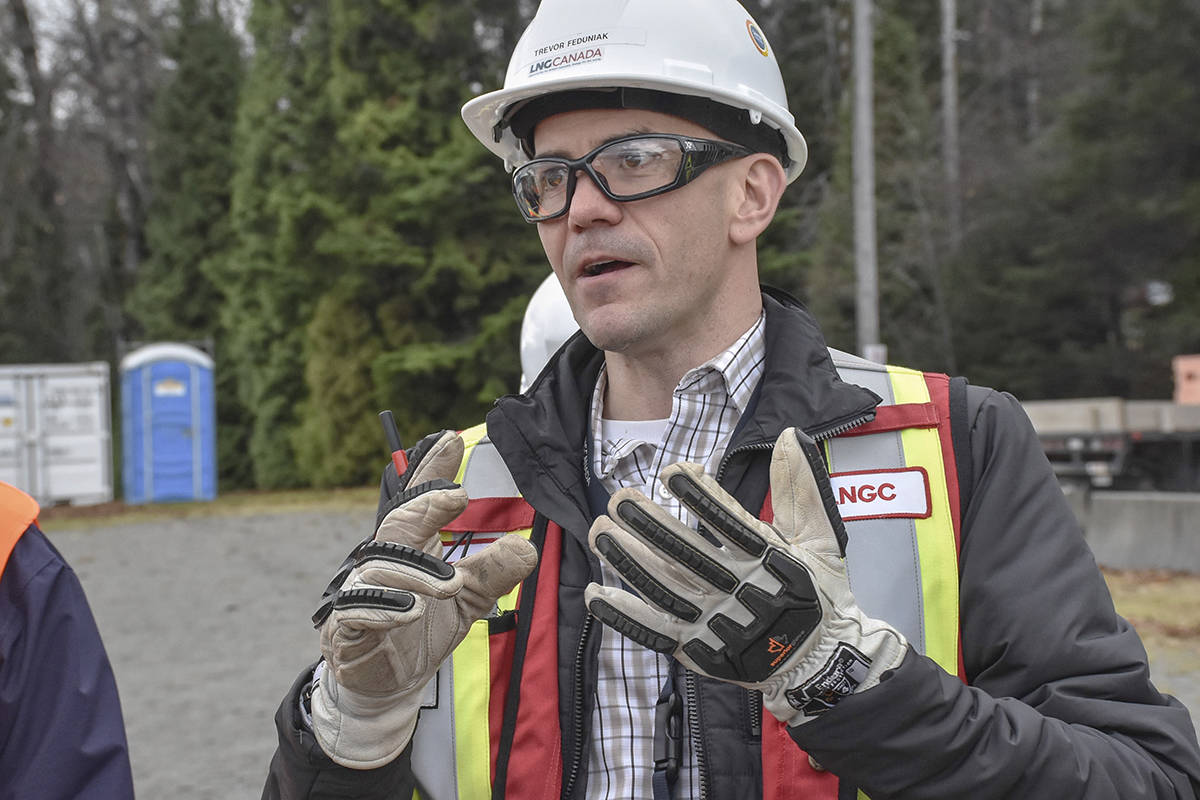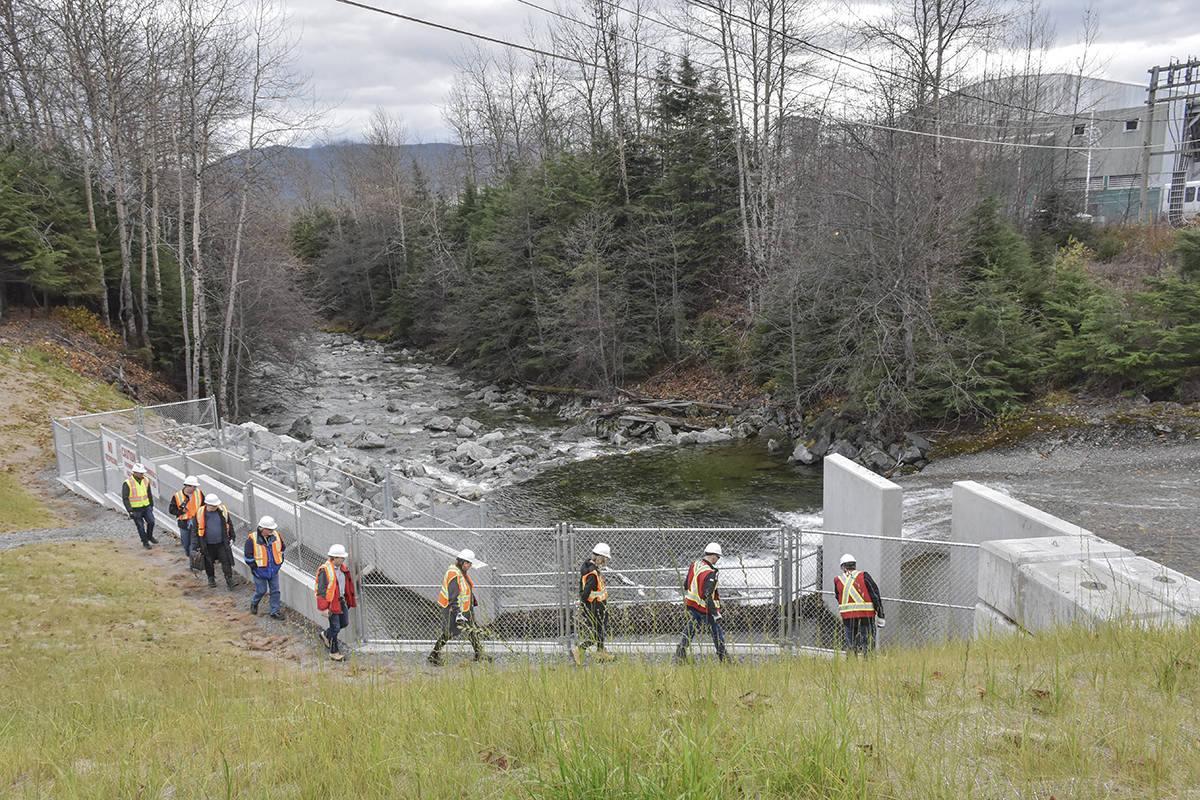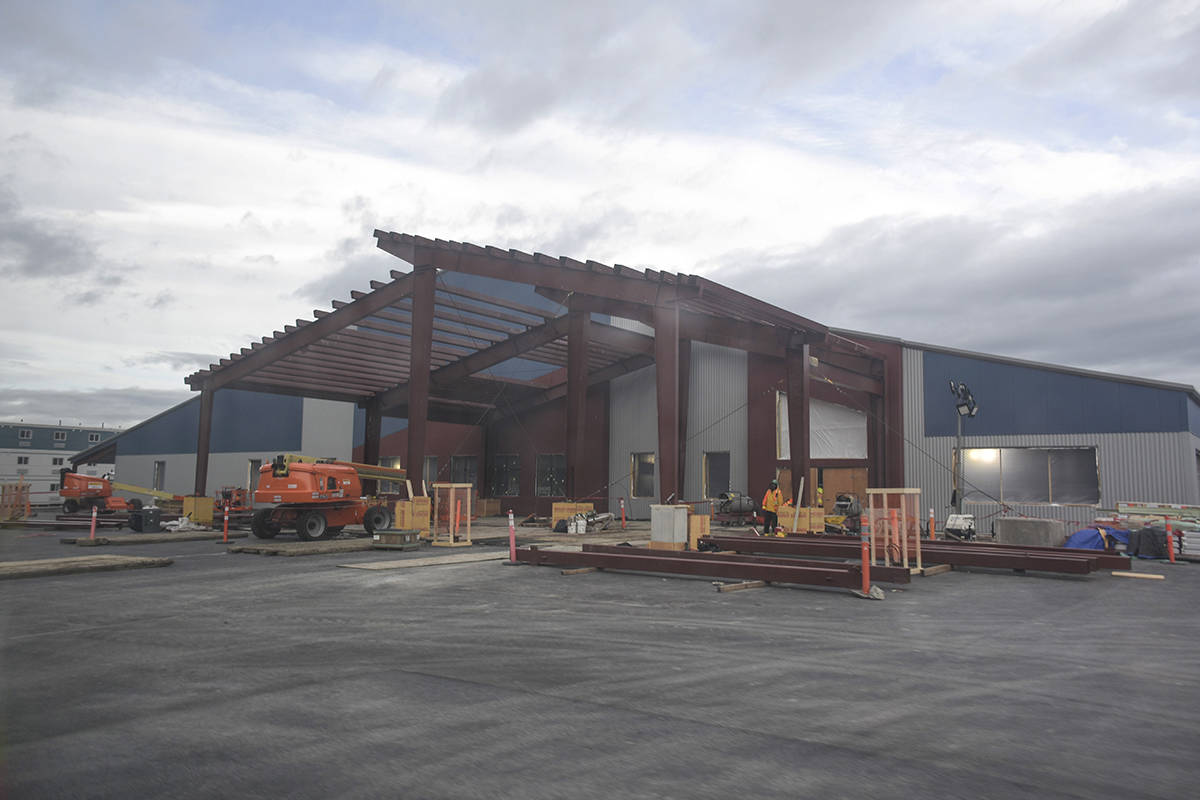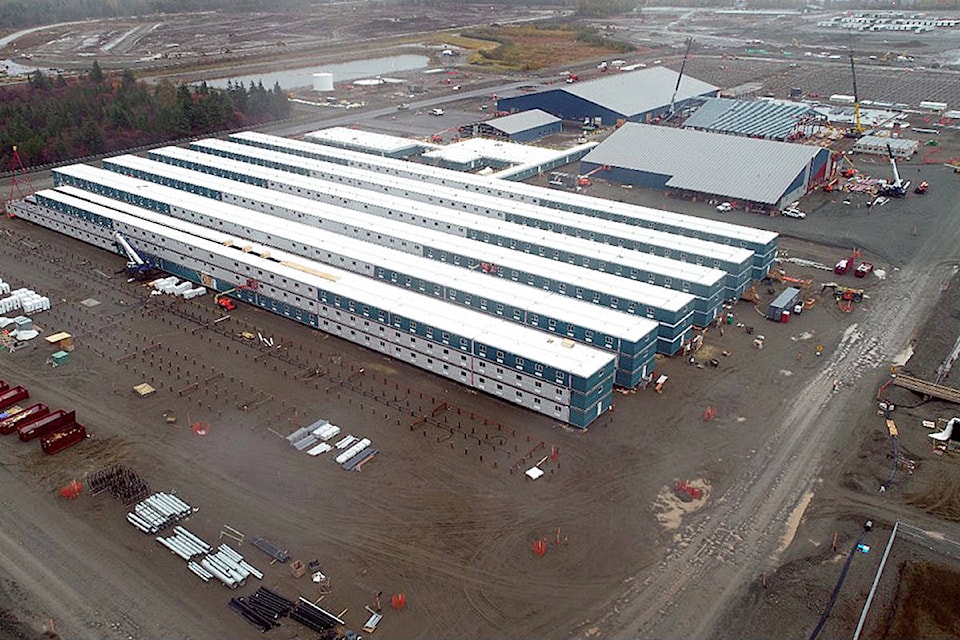Born in Ireland but having spent years overseeing liquefied natural gas (LNG) construction projects in Australia, LNG CanadaÏăœ¶ÊÓÆ”Ö±Č„s just-arrived general manager for its $40 billion facility in Kitimat is firm about his expectations.
Ïăœ¶ÊÓÆ”Ö±Č„We want this to be the safest project on earth,Ïăœ¶ÊÓÆ”Ö±Č„ Vince Kenny says of construction which has just passed the one year mark leading to a planned finish in 2024.
With just under 1,000 people now working at the 400-hectare site, now is the time to cement that standard, he says.
Ïăœ¶ÊÓÆ”Ö±Č„By the time we get to 5,000 people, we will have that culture in place,Ïăœ¶ÊÓÆ”Ö±Č„ Kenny emphasizes that this project which will be his seventh. Ïăœ¶ÊÓÆ”Ö±Č„Unless weÏăœ¶ÊÓÆ”Ö±Č„ve got a culture, all the systems, processes and procedures are ineffective.Ïăœ¶ÊÓÆ”Ö±Č„
Employees begin each shift reviewing the work plan, a procedure called a toolbox discussion.
Ïăœ¶ÊÓÆ”Ö±Č„WeÏăœ¶ÊÓÆ”Ö±Č„re here to take care of one another,Ïăœ¶ÊÓÆ”Ö±Č„ says Kenny, translating the IIF acronym thatÏăœ¶ÊÓÆ”Ö±Č„s the hallmark of LNG Canada Ïăœ¶ÊÓÆ”Ö±Č„ Incident and Injury Free.
Even a brief tour of the works by a group of journalists from across B.C. starts with a video of LNG Canada workers outlining safety and security, the two words being almost interchangeable.
Workers have ID cards to be Ïăœ¶ÊÓÆ”Ö±Č„badged in,Ïăœ¶ÊÓÆ”Ö±Č„ creating an electronic record of their presence. TheyÏăœ¶ÊÓÆ”Ö±Č„re required to stay within their designated work area. There are constant security patrols. Vehicles are inspected for any fluid leaks before entry. ThereÏăœ¶ÊÓÆ”Ö±Č„s specific mention of drug-sniffing dogs too.
READ MORE:
No one gets on the site without basic safety equipment Ïăœ¶ÊÓÆ”Ö±Č„ hardhat, safety glasses, a high visibility vest, work boots and gloves. The driver of the tour bus taking the journalists to the site points out emergency exit windows. He brandishes a small hammer to smash a window if necessary. The bus doesnÏăœ¶ÊÓÆ”Ö±Č„t move until each passenger clicks in their seatbelt.
| Victor Kenny, LNG Canada general manager |
Although the project was not given the formal go-ahead until last October by LNG CanadaÏăœ¶ÊÓÆ”Ö±Č„s investors Shell, PETRONAS from Malaysia, PetroChina from China, Mitsubishi Corporation from Japan and Korean-owned KOGAS, crews had been fully occupied raising up the location to a construction standard and to safeguard it against the possibility of tsunami sweeping inland from the Douglas Channel.
The fill comes from the nearby Sandhill, a mountain of material Feduniak describes as perfect for its material composition. One million cubic metres has already been transferred, edging away at the overall 2.5 million cubic metres that will have to be moved and placed in preparation for the arrival of two massive processing modules. From there, the gas will be transported via a pipeline from northeastern B.C., super-cooled to a liquid state for storage and then shipped out on specialized tankers to Asian customers.
Ïăœ¶ÊÓÆ”Ö±Č„This is what we call coming out of the ground,Ïăœ¶ÊÓÆ”Ö±Č„ Feduniak explains as a tour bus winds its way through the site, encountering massive material-carrying trucks along the way.
Two streams that cross the site, the Kitimat Side Channel and Beaver Creek, were diverted to ensure Fluor-JGC has dry and stable conditions on which to construct the plant.
Ïăœ¶ÊÓÆ”Ö±Č„When you disturb one habitat, you have to compensate with two [enhancement measures],Ïăœ¶ÊÓÆ”Ö±Č„ says Feduniak of the environmental work that was involved.
He compares the detailed water course replacement work for fish and other habitat to that of a landscaped Japanese garden.
One corner of the project site contains what, to the untrained eye, looks like sections of pipe stacked metres above the ground.
What they are are the pilings, 40 metres long, that will be driven into the ground upon which the two processing buildings will sit.
READ MORE:
Those processing modules being built in Asia are to be 70 metres long, 35 metres wide and 50 metres tall, the approximate height of a 13-storey commercial building.
TheyÏăœ¶ÊÓÆ”Ö±Č„ll be shipped to Kitimat in modular segments and assembled on-site, being transported to their final resting place via an elaborate series of interconnected trailers with hundreds of wheels controlled by a single operator using a remote control. So sophisticated is the transport system that the operator is able to place the modules within centimetres of where they need to be located.
The sheer height of the modules has meant raising Rio Tinto BC WorksÏăœ¶ÊÓÆ”Ö±Č„ power lines that cross the site to deliver power to the smelter from Kemano, so that the modules can fit comfortably underneath when being moved.
One of the more visible above-ground projects now underway is that of the worker camp, Cedar Valley Lodge, which is being built by the ATCO-Bird joint venture, for another joint venture between Fluor Corporation and JGC, the overall general contractor on the project.
ThereÏăœ¶ÊÓÆ”Ö±Č„ll be two living unit sections with a series of common buildings in the middle.
One of the modular accommodation sections is now being assembled with a finishing schedule of next spring to meet a first goal of 1,500 Ïăœ¶ÊÓÆ”Ö±Č„heads in bedsÏăœ¶ÊÓÆ”Ö±Č„ with 1,000 more beds to be added each quarter thereafter to the final total of 4,500.
Unlike camps of past, each worker will have his or her own bathroom and each room will have its own TV. ThereÏăœ¶ÊÓÆ”Ö±Č„ll be sound dampening and other acoustic methods so that sleeping quarters will be as quiet as possible. The living areas will be co-ed.
The middle buildings will contain administration offices, sports and recreation facilities including male and female gyms, kitchen and dining facilities, an entertainment centre, a licensed lounge, a medical clinic, storage for luggage and housekeeping and maintenance facilities.
ThereÏăœ¶ÊÓÆ”Ö±Č„ll be landscaping around the area and informational material describes the facility as having the Ïăœ¶ÊÓÆ”Ö±Č„largest core footprintÏăœ¶ÊÓÆ”Ö±Č„ of its kind in Canada.
Ïăœ¶ÊÓÆ”Ö±Č„You want your workers to come here and then want to come back,Ïăœ¶ÊÓÆ”Ö±Č„ said LNG Canada spokesperson Susannah Pierce of the atmosphere and amenities of the facility.
More than 4,500 people will be onsite at any one time at the peak of construction, requiring between 7,000 to 7,500 people in all given the shift work nature of the project. Workers will be onsite for 14 days at a time, returning after a seven-day break.
All this compares to another large worker camp in B.C. Ïăœ¶ÊÓÆ”Ö±Č„ the 1,600-room facility at B.C. HydroÏăœ¶ÊÓÆ”Ö±Č„s Site C project in northeastern B.C.
With accommodation facilities now underway, thereÏăœ¶ÊÓÆ”Ö±Č„s other activity on the waterfront at two terminal sites.
LNG Canada is building Rio Tinto a new wharf in exchange for taking over the aluminum smelting companyÏăœ¶ÊÓÆ”Ö±Č„s existing wharf. Dredging is now going on as part of that project.






